Wind Power Short-Term Forecasting Method Based on LSTM and Multiple Error Correction
Abstract
1. Intro
1.1. Organization of the Paper
1.2. Data Analysis
2. Introduction
2.1. Background and Motivation
2.2. Literature Review
2.2.1. General Model and Method of Short-Term Wind Power Prediction
2.2.2. Application of the LSTM Model in Short-Term Wind Power Prediction
2.3. Proposed Method and Contributions
3. Model and Method
3.1. Affine Optimization Correction Model for Wind Power Data
3.1.1. Model Introduction and Parameter Setting
3.1.2. Model Optimization
3.2. PSO-SWLSTM Prediction Model of Wind Power
3.2.1. Model Introduction
3.2.2. Simulation Steps and Parameter Settings
- (1)
- Normalize the processed data to facilitate subsequent data processing and map the data to 0~1 for processing.
- (2)
- Select the hyperparameters (number of neurons and learning rate) that need to be adjusted in LSTM and their respective optimization ranges.
- (3)
- Initialize PSO parameters. This includes the initial velocity, position, training frequency, and particle scale. The number of particle training is set to 20, and the number of particles is set to 100.
- (4)
- Set the inertia weight of PSO as 0.8 to ensure faster convergence speed of the particle swarm optimization algorithm.
- (5)
- Determine the fitness function of particles. In this paper, the RMSE value of the SWLSTM prediction model will be minimized as the fitness function of particles, and the optimal model parameters will be sought.
- (6)
- Set the step size of the model’s self-moving window. The SWLSTM model takes an eight step size as the window to predict step by step.
- (7)
- Calculate the fitness value of particles and update the optimal fitness value.
- (8)
- Record the optimal position of particles and update the optimal part of the population.
- (9)
- Determine whether the number of cycles is reached. If the number of cycles is satisfied, the optimal position of the particle swarm and SWLSTM prediction results are output. If not, return to Step 7.
3.3. Wind Power Error Feedback Correction Model Based on LSTM
3.3.1. Model Introduction
3.3.2. Simulation Process and Parameter Setting
4. Model Simulation and Result Analysis
4.1. Affine Optimization Model Results
4.2. Parameter Optimization Result
4.3. Comparative Analysis of Prediction Results
- (1)
- Compared with the traditional LSTM model, the PSO-SWLSTM model proposed in this paper can reduce the root mean square error of prediction results and obtain more reasonable predictions.
- (2)
- We can see that by comparing M3 and M4 curves with the M1 curves. The affine optimization model and EFCM-LSTM model proposed in this paper can effectively reduce the error of prediction results in data correction or error correction. This makes the forecast more efficient and reasonable.
- (3)
- It can be seen from the observation curves M3 and M4 that the improved model has good stability, and the RMSE value of the predicted result is stable at about 15%, which can improve the model prediction result stably and effectively.
- (4)
- Compared with the traditional LSTM model, the model proposed in this paper can significantly improve the prediction results and control the RMSE value at about 10%. The best result in 10 training can reach 7.52%.
5. Conclusions
Author Contributions
Funding
Institutional Review Board Statement
Informed Consent Statement
Data Availability Statement
Conflicts of Interest
Nomenclature
| IEEE | Institute of Electrical and Electronics Engineers |
| PSO-SWLSTM | Self-moving window long and short-term memory neural network prediction model based on particle swarm optimization |
| EFCM-LSTM | Error feedback correction model based on the LSTM network |
| MW | Megawatt |
| p. u. | Per unit |
| pcs | Pieces |
| ρ | Represents the correlation between meteorological factors and wind power |
| xt | Time series data of meteorological factors |
| yt | Time series data of wind power |
| The mean of the time series of meteorological factors | |
| The mean value of wind power time series | |
| V10 | Wind speed 10 m above the ground at any given time |
| V30 | Wind speed 30 m above the ground at any given time |
| V50 | Wind speed 50 m above the ground at any given time |
| V70 | Wind speed 70 m above the ground at any given time |
| T | The temperature of the atmosphere at a given time |
| F | The humidity of the atmosphere at a given time |
| P | Atmospheric pressure at a given time |
| ε1 | Noise element introduced by prediction error. |
| ε2 | Noise elements are introduced by other factors affecting the calculation error of wind speed. |
| x1, x2 | The noise element coefficient reflects the degree to which the corresponding noise element causes the input wind speed to deviate from the predicted wind speed. |
| P1 | The upper limit power of the wind power affine model |
| P2 | The lower limit power of the wind power affine model |
| P3 | The upper limit power of an affine optimization model for wind power |
| P4 | The lower limit power of an affine optimization model for wind power |
| a, b, c, d | Differential coefficient of the affine model after Taylor expansion |
| α | The ratio of the number of data in the confidence interval to the number of all data |
| ft, it, Ot | Respectively represent the forgetting gate, input gate, and output gate. |
| ωf, ωi, ωO | Respectively represent the weight of the forgetting, input, and output gates. |
| mt | Represents the input vector of the LSTM model at time t |
| ht−1 | Represents the output vector of the hidden layer of the LSTM model at time t − 1 |
| RMSE | Root mean square error of wind power prediction |
| RMSEerr | The root means a square error of the error data. |
| RMS | Correct root means a square error of power data. |
| PPI | Predicted power at time i |
| PEPi | Error power predicted at time i |
| PRPi | Predicted power after correction at time i |
| PMi | The actual power at time i |
| PEMi | The original error power at time i |
| PRMi | The actual original power at time i |
| Cap | Total start-up capacity of the wind farm |
| xlearn, vlearn | Refer to the position and speed of particle learning rate, respectively |
| xunit, vunit | Refer to the position and velocity of the number of implied units of a particle, respectively |
References
- Dong, Z.; Wong, K.P.; Meng, K.; Luo, F.; Yao, F.; Zhao, J. Wind power impact on system operations and planning. In Proceedings of the IEEE PES General Meeting, Minneapolis, MN, USA, 25–29 July 2010; IEEE: Piscataway, NJ, USA, 2010; pp. 1–5. [Google Scholar]
- He, Q.; Chen, H.; Lin, Z.; Dai, X.; Huang, Y.; Cai, W. A cost-based life-cycle pricing model for offshore wind power plants within China’s carbon trading scheme. Energy Rep. 2022, 8, 147–155. [Google Scholar] [CrossRef]
- Wang, J.; Zhou, Y. Multi-objective dynamic unit commitment optimization for energy-saving and emission reduction with wind power. In Proceedings of the 2015 5th International Conference on Electric Utility Deregulation and Restructuring and Power Technologies (DRPT), Changsha, China, 26–29 November 2015; IEEE: Piscataway, NJ, USA, 2015; pp. 2074–2078. [Google Scholar]
- Bokde, N.; Feijóo, A.; Villanueva, D.; Kulat, K. A Review on Hybrid Empirical Mode Decomposition Models for Wind Speed and Wind Power Prediction. Energies 2019, 12, 254. [Google Scholar] [CrossRef]
- Lu, P.; Ye, L.; Zhao, Y. Review of meta-heuristic algorithms for wind power prediction: Methodologies, applications, and challenges. Appl. Energy 2021, 301, 117446. [Google Scholar] [CrossRef]
- De Giorgi, M.G.; Ficarella, A.; Tarantino, M. Error analysis of short-term wind power prediction models. Appl. Energy 2011, 88, 1298–1311. [Google Scholar] [CrossRef]
- Shahid, F.; Zameer, A.; Muneeb, M. A novel genetic LSTM model for wind power forecast. Energy 2021, 223, 120069. [Google Scholar] [CrossRef]
- Hu, Y.-L.; Chen, L. A nonlinear hybrid wind speed forecasting model using LSTM network, hysteretic ELM, and Differential Evolution algorithm. Energy Convers. Manag. 2018, 173, 123–142. [Google Scholar] [CrossRef]
- Chen, M.-R.; Zeng, G.-Q.; Lu, K.-D.; Weng, J. A two-layer nonlinear combination method for short-term wind speed prediction based on ELM, ENN, and LSTM. IEEE Internet Things J. 2019, 6, 6997–7010. [Google Scholar] [CrossRef]
- Wang, X.; Li, J.; Shao, L.; Liu, H.; Ren, L.; Zhu, L. Short-Term Wind Power Prediction by an Extreme Learning Machine Based on an Improved Hunter–Prey Optimization Algorithm. Sustainability 2023, 15, 991. [Google Scholar] [CrossRef]
- Zhang, Z.; Wang, J.; Wei, D. A novel ensemble system for short-term wind speed forecasting based on Two-stage Attention-Based Recurrent Neural Network. Renew. Energy 2023, 204, 11–23. [Google Scholar] [CrossRef]
- Jaseena, K.; Kovoor, B.C. Decomposition-based hybrid wind speed forecasting model using deep bidirectional LSTM networks. Energy Convers. Manag. 2021, 234, 113944. [Google Scholar] [CrossRef]
- Liu, H.; Mi, X.; Li, Y. Smart multi-step deep learning model for wind speed forecasting based on variational mode decomposition, singular spectrum analysis, LSTM network, and ELM. Energy Convers. Manag. 2018, 159, 54–64. [Google Scholar] [CrossRef]
- Zhou, J.; Yu, X.; Jin, B. Short-Term Wind Power Forecasting: A New Hybrid Model Combined Extreme-Point Symmetric Mode Decomposition, Extreme Learning Machine and Particle Swarm Optimization. Sustainability 2018, 10, 3202. [Google Scholar] [CrossRef]
- Sheng, Y.; Wang, H.; Yan, J. Short-term wind power prediction method based on deep clustering-improved Temporal Convolutional Network. Energy Rep. 2023, 9, 2118–2129. [Google Scholar] [CrossRef]
- Cali, U.; Sharma, V. Short-term wind power forecasting using long-term memory-based recurrent neural network model and variable selection. Int. J. Smart Grid Clean Energy 2019, 8, 103–110. [Google Scholar] [CrossRef]
- Joseph, L.P.; Deo, R.C.; Prasad, R. Near real-time wind speed forecast model with bidirectional LSTM networks. Renew. Energy 2023, 204, 39–58. [Google Scholar] [CrossRef]
- Son, N.; Yang, S.; Na, J. Hybrid forecasting model for short-term wind power prediction using modified long short-term memory. Energies 2019, 12, 3901. [Google Scholar] [CrossRef]
- Shahid, F.; Zameer, A.; Mehmood, A. A novel wavenets long short-term memory paradigm for wind power prediction. Appl. Energy 2020, 269, 115098. [Google Scholar] [CrossRef]
- Zhang, J.; Yan, J.; Infield, D. Short-term forecasting and uncertainty analysis of wind turbine power based on long short-term memory network and Gaussian mixture model. Appl. Energy 2019, 241, 229–244. [Google Scholar] [CrossRef]
- Wu, J.H.; Shao, Z.G.; Yang, S.H. A combined algorithm for data cleaning of wind power scatter diagram considering actual engineering characteristics. IOP Publ. 2020, 1639, 012044. [Google Scholar] [CrossRef]
- Sun, Y.; Wang, X.; Yang, J. Modified Particle Swarm Optimization with Attention-Based LSTM for Wind Power Prediction. Energies 2022, 15, 4334. [Google Scholar] [CrossRef]
- Qu, J.Q.; Qian, Z.; Pei, Y. Day-ahead hourly photovoltaic power forecasting using attention-based CNN-LSTM neural network embedded with multiple relevant and target variables prediction pattern. Energy 2021, 232, 120996. [Google Scholar] [CrossRef]
- Wang, D.; Cui, X.; Niu, D. Wind Power Forecasting Based on LSTM Improved by EMD-PCA-RF. Sustainability 2022, 14, 7307. [Google Scholar] [CrossRef]

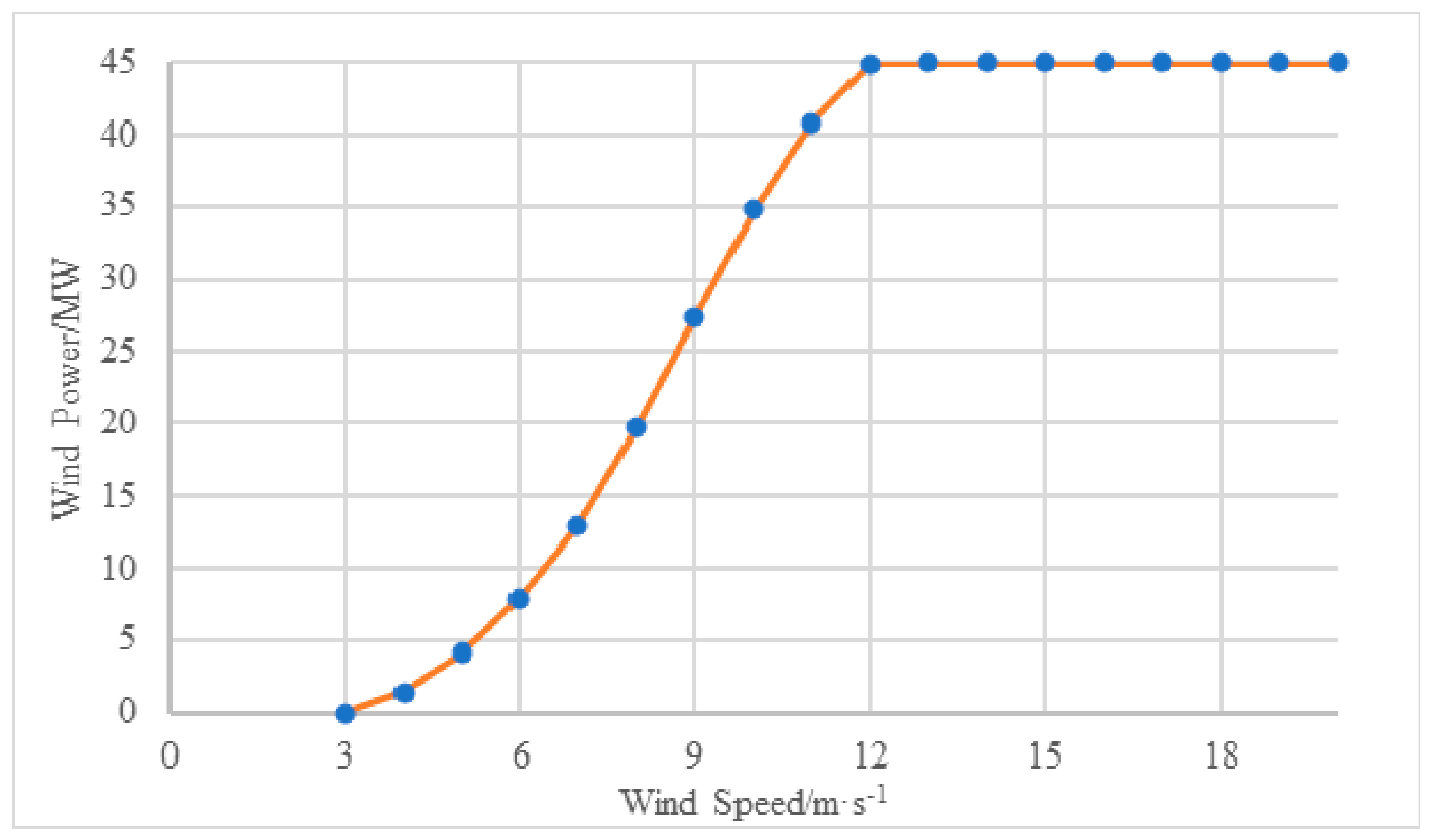
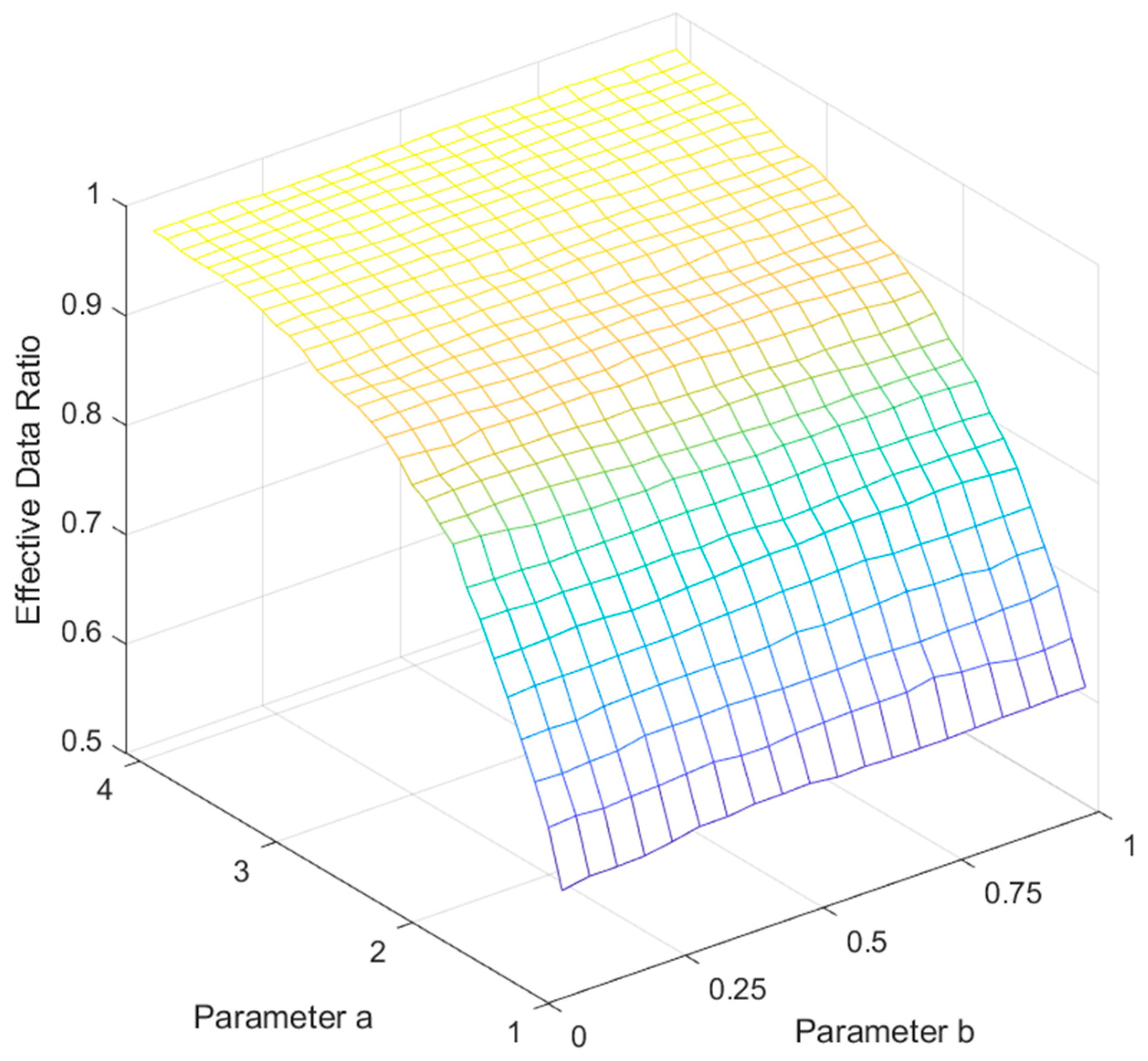
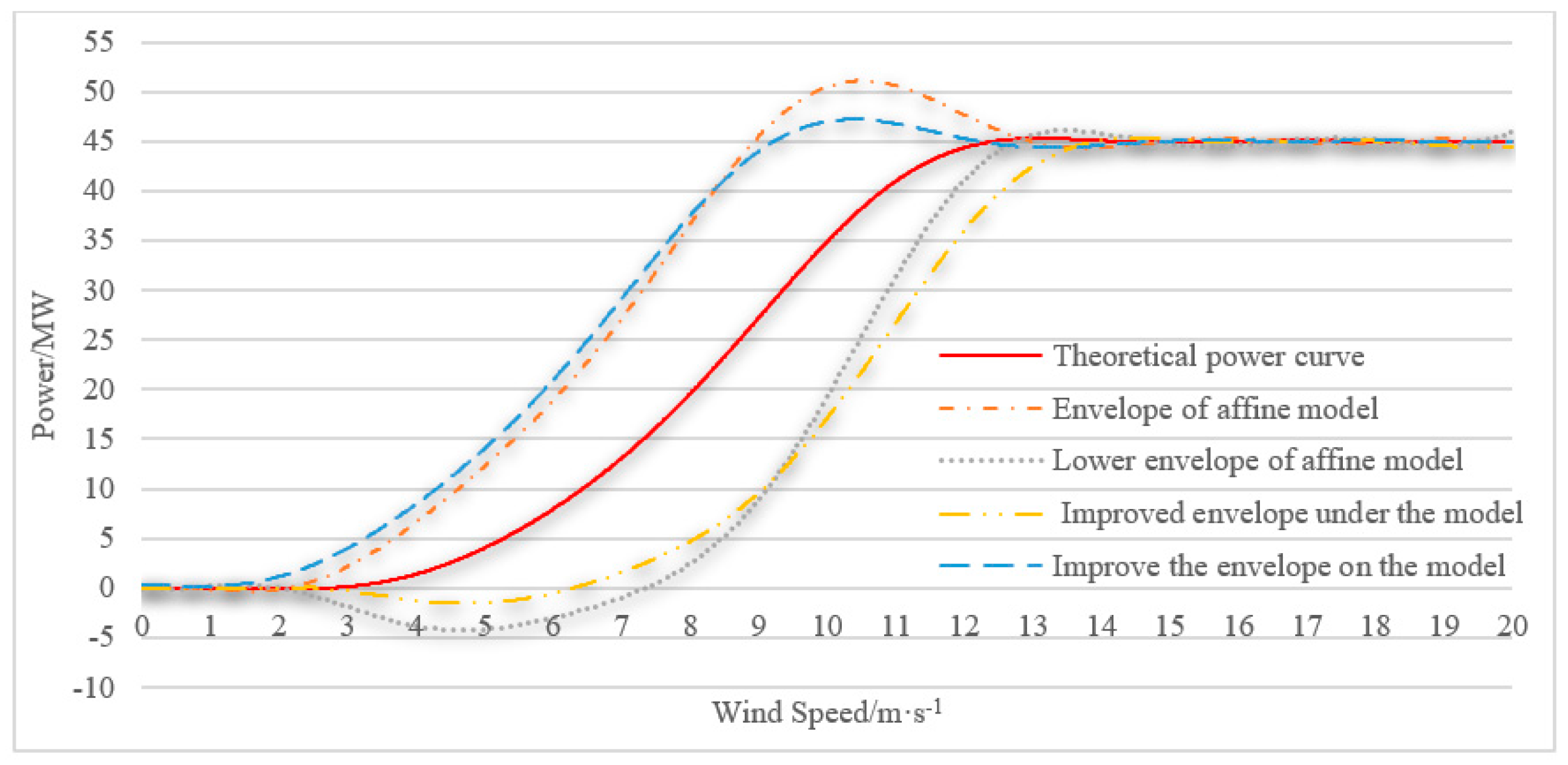
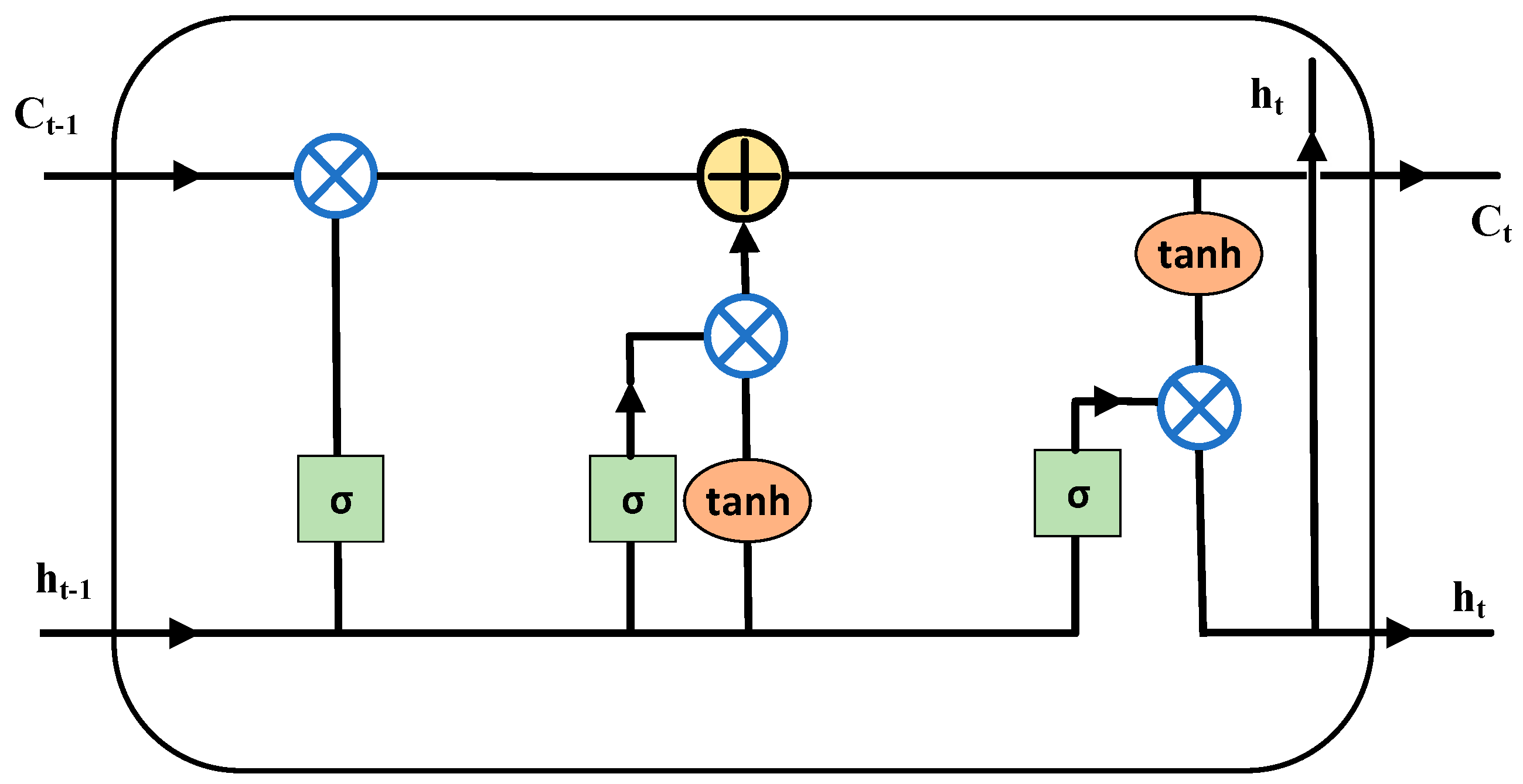
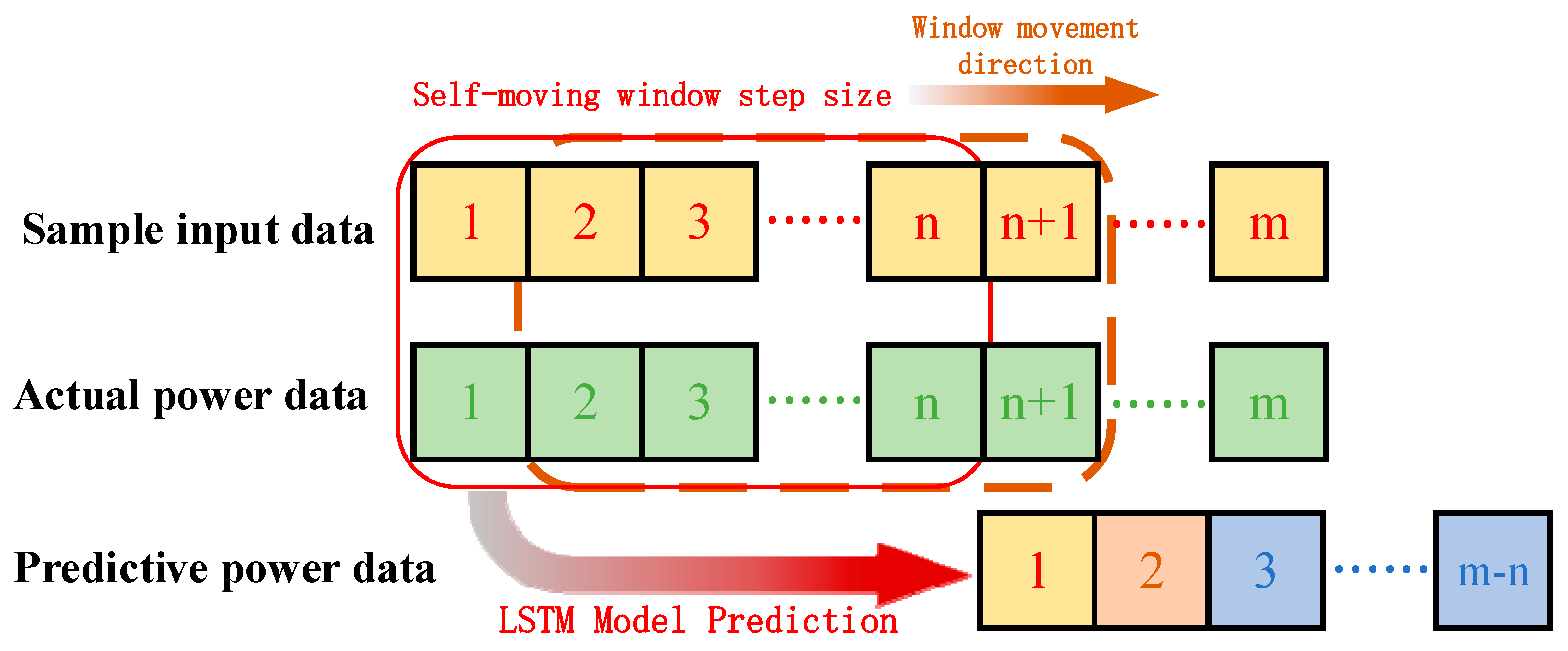
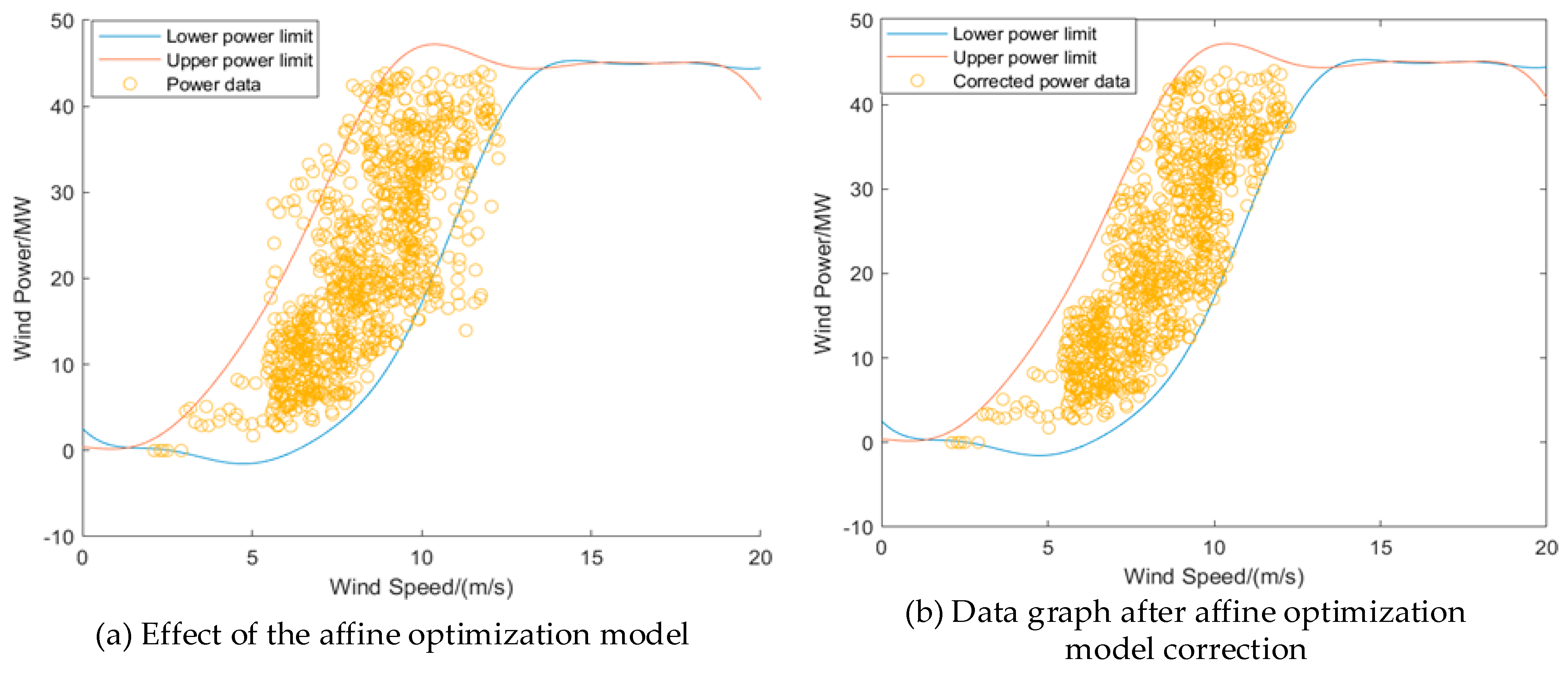
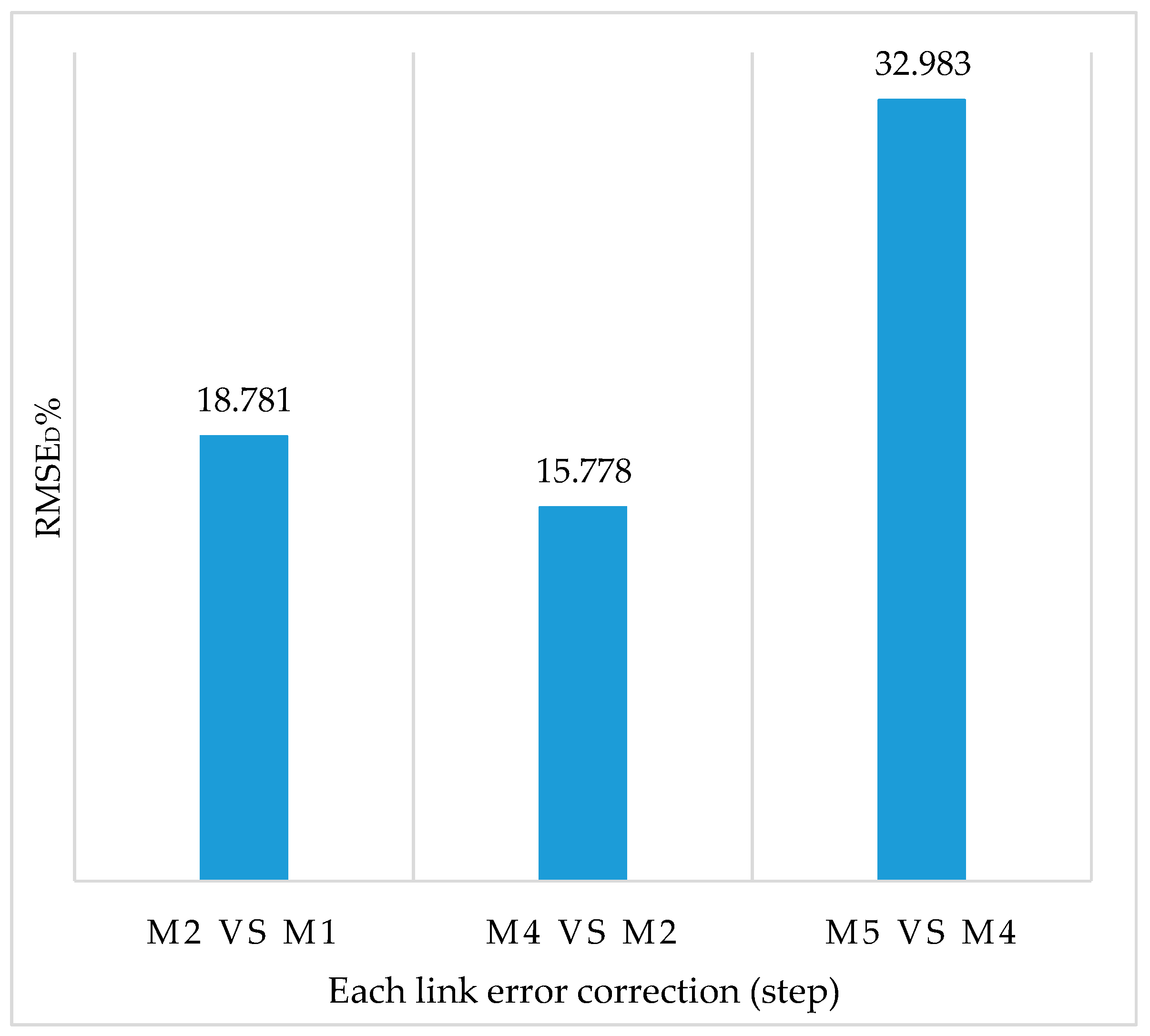
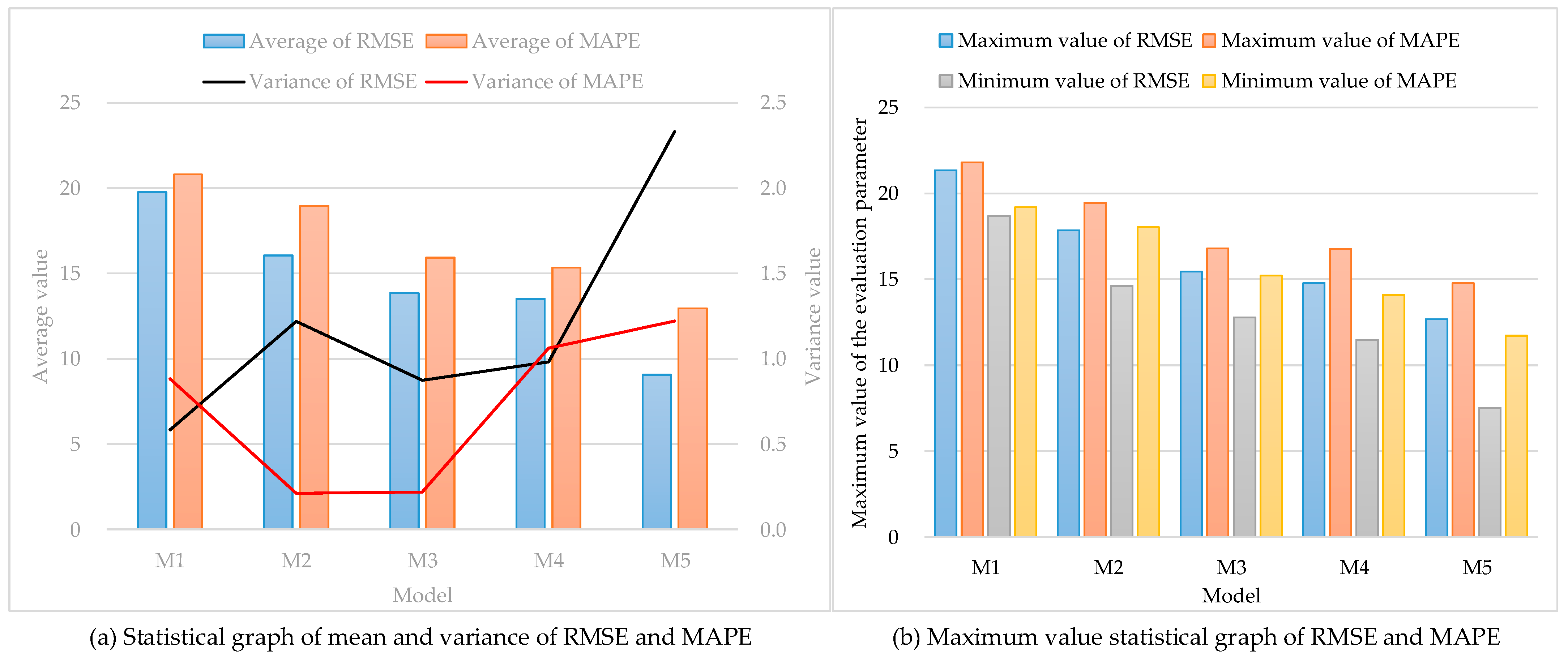
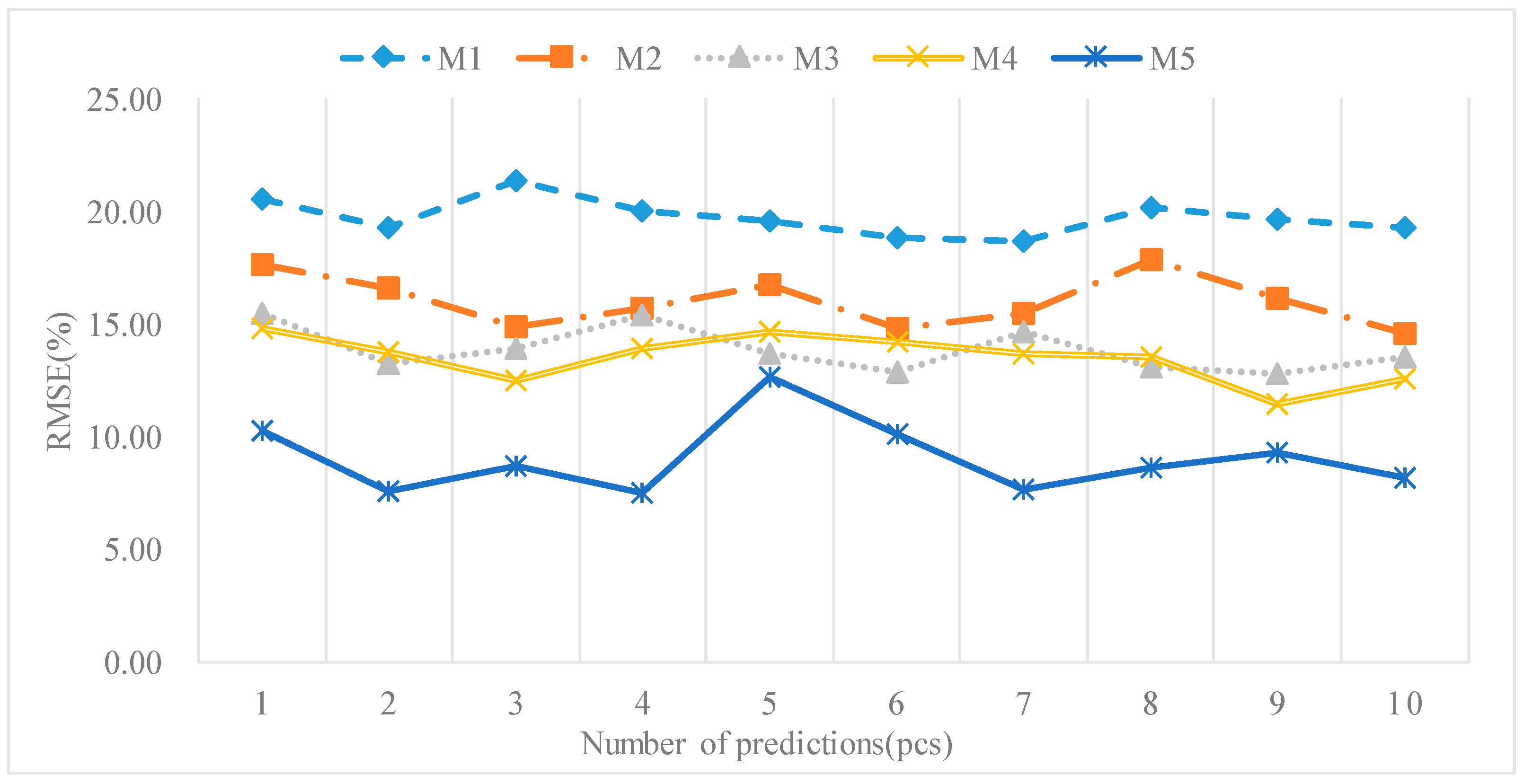
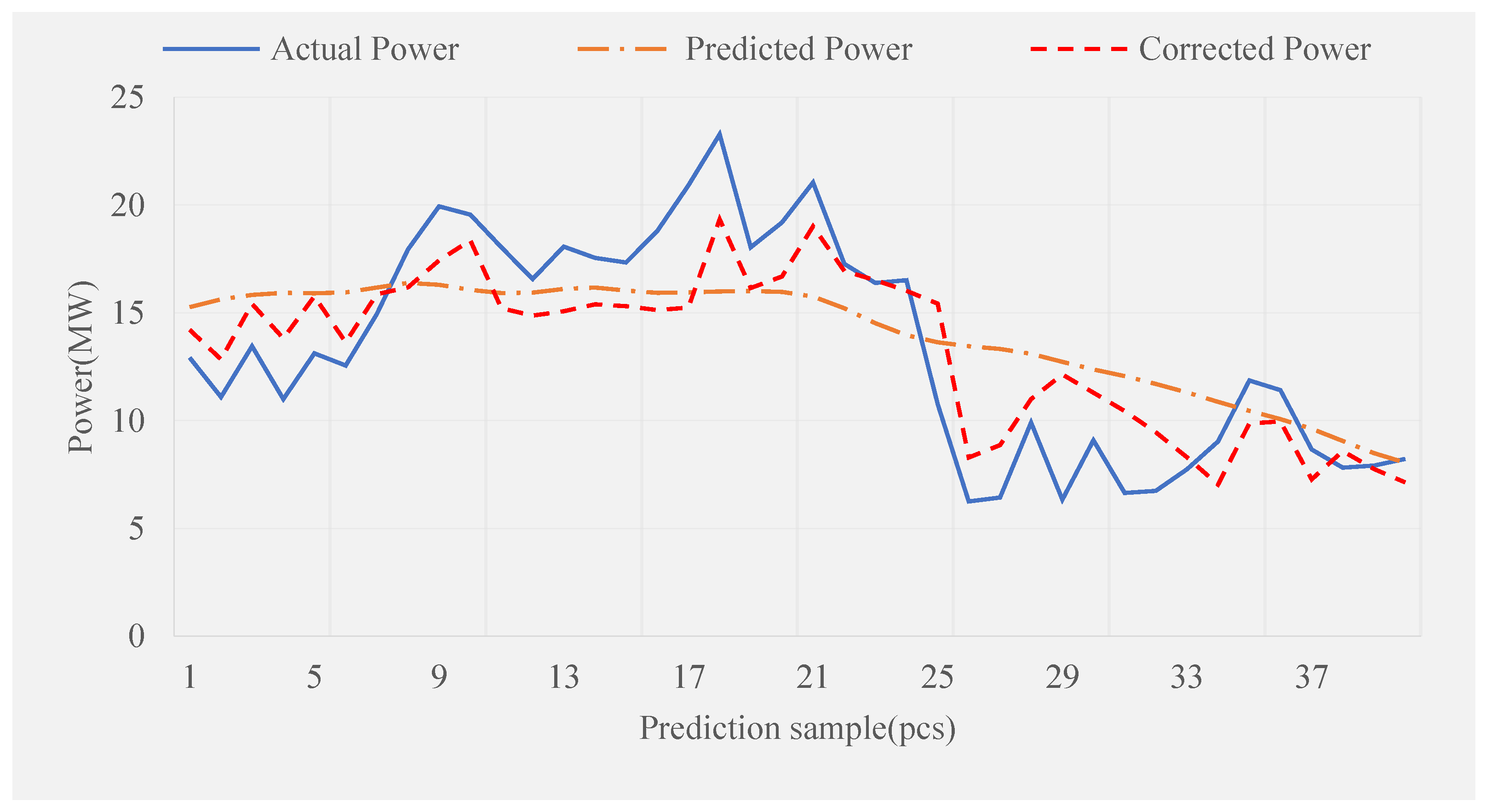
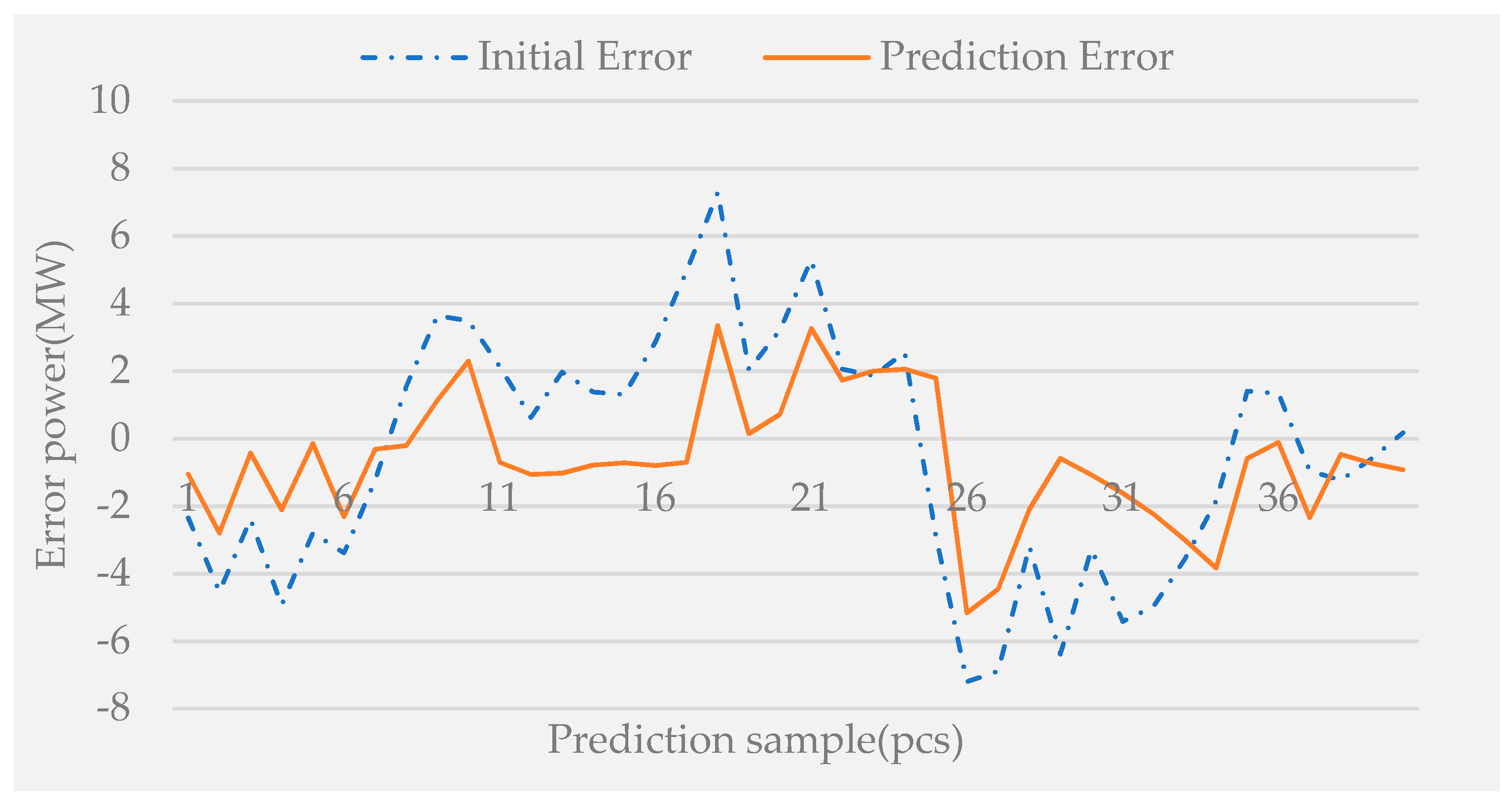
| Model | Description of Model |
|---|---|
| M1 | The prediction using the traditional LSTM model |
| M2 | predicted by the self-moving window LSTM model (namely PSO-SWWLSTM) based on the particle swarm optimization algorithm. |
| M3 | The prediction using the PSO-SWWLSTM model, and the error feedback correction model based on the LSTM network (i.e., EFCM) is used to correct the predicted data. |
| M4 | The affine optimization model is first used for data correction, and then the PSO-SWLSTM model is used for prediction. |
| M5 | The model proposed in this paper. |
| Count | Mean | Standard Deviation | Median | Kurtosis | Skewness | Minimum | Maximum | |
|---|---|---|---|---|---|---|---|---|
| Wind speed (10 m), m/s | 960 | 6.292 | 0.043 | 6.330 | −0.085 | −0.170 | 1.600 | 9.280 |
| Wind speed (30 m), m/s | 960 | 7.380 | 0.050 | 7.420 | −0.124 | −0.172 | 1.880 | 10.860 |
| Wind speed (50 m), m/s | 960 | 7.948 | 0.054 | 7.990 | −0.141 | −0.173 | 2.020 | 11.690 |
| Wind speed (70 m), m/s | 960 | 8.342 | 0.057 | 8.395 | −0.114 | −0.194 | 2.120 | 12.260 |
| Temperature, °C | 960 | 27.748 | 0.039 | 27.540 | 32.628 | −3.029 | 14.460 | 30.590 |
| Humidity, %rh | 960 | 87.488 | 0.151 | 88.195 | −0.104 | −0.488 | 73.440 | 96.370 |
| Pressure, Pa | 960 | 1003.019 | 0.085 | 1003.538 | 1.781 | −1.403 | 994.463 | 1007.409 |
| Wind power, MW | 960 | 21.478 | 0.363 | 20.331 | −1.119 | 0.187 | 0 | 44.027 |
| Model | RMSE (%) | ||||||||||
|---|---|---|---|---|---|---|---|---|---|---|---|
| 1 | 2 | 3 | 4 | 5 | 6 | 7 | 8 | 9 | 10 | Average | |
| M1 | 20.57 | 19.32 | 21.35 | 20.03 | 19.56 | 18.87 | 18.69 | 20.22 | 19.67 | 19.31 | 19.759 |
| M2 | 17.68 | 16.58 | 14.89 | 15.73 | 16.77 | 14.79 | 15.45 | 17.85 | 16.14 | 14.60 | 16.048 |
| M3 | 15.45 | 13.23 | 13.89 | 15.42 | 13.67 | 12.89 | 14.63 | 13.12 | 12.78 | 13.54 | 13.862 |
| M4 | 14.78 | 13.76 | 12.47 | 13.89 | 14.68 | 14.25 | 13.69 | 13.57 | 11.48 | 12.59 | 13.516 |
| M5 | 10.23 | 7.57 | 8.67 | 7.52 | 12.68 | 10.15 | 7.69 | 8.63 | 9.27 | 8.17 | 9.058 |
| Model | MAPE (%) | ||||||||||
|---|---|---|---|---|---|---|---|---|---|---|---|
| 1 | 2 | 3 | 4 | 5 | 6 | 7 | 8 | 9 | 10 | Average | |
| M1 | 19.35 | 20.65 | 21.35 | 21.80 | 20.87 | 19.18 | 20.22 | 21.49 | 21.58 | 21.48 | 20.797 |
| M2 | 19.04 | 19.45 | 19.07 | 19.12 | 18.02 | 18.80 | 18.98 | 18.33 | 19.44 | 19.26 | 18.951 |
| M3 | 16.79 | 15.40 | 15.22 | 15.68 | 15.89 | 16.30 | 16.32 | 16.16 | 15.73 | 15.85 | 15.934 |
| M4 | 16.69 | 14.08 | 14.46 | 15.88 | 15.03 | 16.19 | 14.47 | 15.71 | 16.76 | 14.17 | 15.344 |
| M5 | 12.03 | 13.05 | 13.18 | 11.98 | 11.72 | 14.77 | 14.57 | 13.11 | 13.37 | 11.73 | 12.951 |
Disclaimer/Publisher’s Note: The statements, opinions and data contained in all publications are solely those of the individual author(s) and contributor(s) and not of MDPI and/or the editor(s). MDPI and/or the editor(s) disclaim responsibility for any injury to people or property resulting from any ideas, methods, instructions or products referred to in the content. |
© 2023 by the authors. Licensee MDPI, Basel, Switzerland. This article is an open access article distributed under the terms and conditions of the Creative Commons Attribution (CC BY) license (https://creativecommons.org/licenses/by/4.0/).
Share and Cite
Xiao, Z.; Tang, F.; Wang, M. Wind Power Short-Term Forecasting Method Based on LSTM and Multiple Error Correction. Sustainability 2023, 15, 3798. https://doi.org/10.3390/su15043798
Xiao Z, Tang F, Wang M. Wind Power Short-Term Forecasting Method Based on LSTM and Multiple Error Correction. Sustainability. 2023; 15(4):3798. https://doi.org/10.3390/su15043798
Chicago/Turabian StyleXiao, Zhengxuan, Fei Tang, and Mengyuan Wang. 2023. "Wind Power Short-Term Forecasting Method Based on LSTM and Multiple Error Correction" Sustainability 15, no. 4: 3798. https://doi.org/10.3390/su15043798
APA StyleXiao, Z., Tang, F., & Wang, M. (2023). Wind Power Short-Term Forecasting Method Based on LSTM and Multiple Error Correction. Sustainability, 15(4), 3798. https://doi.org/10.3390/su15043798






